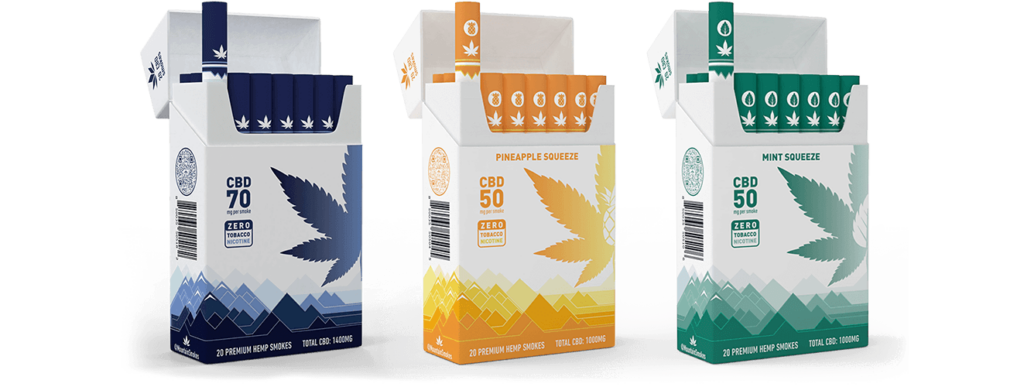What is Nicotine?

The Deadly Drug Used by Millions
Nicotine has been the subject of contentious debate for decades. Some of us know it as the addictive additive in tobacco and vaping products such as vape juice used in e-cigs, while others may have experimented with its use as a stimulant.
No matter your current understanding of this dangerous drug, and make no mistake: nicotine is a dangerous, deadly and addictive drug; this guide will help you take a deeper dive into the truth about nicotine, pulling back the curtain on this pervasive and harmful drug.
What is Nicotine?
Nicotine is the psychoactive drug most commonly found in tobacco and vaping products. Although the tobacco industry may argue this point infinitum, nicotine is a highly addictive substance, arguably added to tobacco to get consumers addicted and ‘hooked’ on tobacco products.
Where Does Nicotine Come From?
Although nicotine can be synthetically produced in the lab, this drug is naturally found as a plant-produced alkaloid made by the nightshade family of plants.
Known scientifically as Solanaceae, nightshades represent a diverse family of flowering plants, including 98 genera and 2700 known species found in a range of various habitats around the world. In fact, plants belonging to the nightshade family thrive on every continent except for Antarctica.
Among members of the nightshade family of plants include perennial and annual varieties of:
- Spices
- Herbs
- Ornamentals
- Weeds
- Medicinal plants
- Agricultural crops
It is important to note that several members of the Solanaceae (nightshade) family of plants produce alkaloids that are known to be highly toxic.
Members of the Solanaceae Plant Family That Produce Nicotine:
- Eggplant
- Potato
- Green Pepper
- Tomato
- Coca plant
However, among those plants which produce nicotine, none has a higher concentration than does the tobacco plant (Nicotiana tabacum) and the Duboisia hopwoodii, an arid-dwelling shrub native to the interior of Australia.
How Much Nicotine is Naturally In Tobacco?
Nicotine comprises a generous 0.3-0.5% of the plant’s weight by dry volume, being synthesized naturally by the roots, and later being shuttled to and concentrating in the plant’s leaves.
What is the Chemistry of Nicotine?
A Chiral Alkaloid
Chemically speaking, nicotine is a chiral alkaloid. In chemistry, an ion or molecule that cannot be superimposed on a mirror image of itself is referred to as chiral. Geometrically this phenomenon is referred to as chirality.
What this means is that a chiral molecule (or ion) exists as two mirror images of each other, called stereoisomers. Think of this like your hands. Each is a mirror image of the other (left and right). In fact, sometimes chiral molecules are referred to as ‘left or right handed’.
Such molecules have identical physical properties, such as the atoms that comprise them and their molecular weight, but optically they appear different.
Nicotine is also an alkaloid. In chemistry, an alkaloid refers to any class of organic (plant-based) nitrogen compounds, many of which have profound physiological effects if consumed by mammals (which we are).
Molecular Formula
- C₁₀H₁₄N₂
Molecular Weight
- 23 g/mol
Appearance
Visually, nicotine presents as a colorless, or sometimes yellowish-brown, oily liquid.
Solubility
Nicotine is soluble in light petroleum, ether and alcohol. When formed into ammonium salts it is water-soluble.
Flash Point
- 95° C
Ignition Temperature
- 244° C
What is the Pharmacology of Nicotine?
Nicotine has been shown to act as an agonist when interacting with all but two of the body’s nicotinic acetylcholine receptors.
What Are Nicotinic Acetylcholine Receptors?
Often abbreviated as nAChRs, nicotinic acetylcholine receptors are located in the peripheral and central nervous system, as well as muscle and other tissues. There they respond to the presence of the neurotransmitter acetylcholine, as well as agonistic drugs such as nicotine.
Nicotinic receptors are involved in the transmission of outbound signals for the parasympathetic as well as the sympathetic nervous system. When influenced by nicotine, these receptors are involved in a myriad of downstream physiological and neurochemical responses that cause a range of varying effects on the body.
REFERENCE: https://www.ncbi.nlm.nih.gov/pmc/articles/PMC2946180/
What Are the Effects of Nicotine?
Nicotine is known for producing psychoactive effects as a result of its binding to nicotinic acetylcholine receptors in the brain. When bound to these receptors, nicotine can influence the level of neurotransmitters in several structural areas of the brain.
Nicotine is a somewhat peculiar drug, given that its pharmacological profile is subject to change in a dose-dependent manner. What this means is that nicotine can go from being stimulatory to sedative as doses or concentration is increased.
What is the ‘Nicotine High’?
Any time that nicotine is consumed, it makes its way into the bloodstream where it is then transported to the brain. Although nicotine has a profound negative impact on several physiological functions of the body (such as vascular constriction, increased heart rate and blood pressure), it is its effect on the central nervous system that elicits what is known as a ‘nicotine high’.
The nicotine ‘high’ is due to central nervous system stimulation, the result of which causes the releases of various neurotransmitters and hormones that affect the brain and the body in both dangerous but pleasurable ways.
What Causes the Nicotine High?
Epinephrine ‘High’
One such hormone released is epinephrine, known more commonly as adrenaline. The release of epinephrine causes a stimulatory effect that can feel energizing and uplifting. Although this feeling comes at a price: higher blood pressure, increased heart rate, vasoconstriction and rapid breathing. All of which can put undue stress on the heart and lungs, leading to an increased risk of vascular damage and scarring, atherosclerosis, heart attacks and stroke.
Dopamine ‘High’
When interacting with nicotinic receptors (specifically alpha-4 beta-2 nicotinic receptor, also known as the α4β2 receptor), it has been shown to initiate the release of dopamine.
Dopamine is commonly known as the ‘feel good’ hormone and neurotransmitter. This is the brain’s primary ‘reward’ and pleasure hormone, responsible for memory, learning, motor system function, pleasurable and enjoyable sensations and more.
It is also a major driver behind nicotine’s addictive properties, creating a ‘high’ or ‘buzz’ that can relieve tension, induce relaxation and improve mood (in the short term). Other studies, such as that from the Harvard Review of Psychiatry have shown that neurotransmitter stimulation pathways affected by nicotine are involved in the biological mechanisms of depression.
https://pubmed.ncbi.nlm.nih.gov/10973935/
How is Nicotine Extracted?
Nicotine is often naturally present at considerably toxic concentrations in tobacco. As such, manufacturers of tobacco products (such as cigarettes), often employ nicotine extraction processes to bring down the concentration to a (still harmful) but less toxic level.
Similarly, while nicotine can be synthesized in the lab, some manufacturers extract nicotine for use in other products (such as nicotine gums, patches or vapes), or to dilute or add to the existing concentration of nicotine in a given product.
Nicotine can be easily dissolved using alcohol, ether or light petroleum. As such, extraction processes typically use a solvent extraction method.
Solvent Extraction Method
Solvent extraction methods are the most commonly employed means of extracting various compounds and chemicals from organic materials (such as plants).
In simple terms, the process involves:
- Preparation of the substrate (in this case cut or ground up tobacco leaves)
- Addition of a chosen solvent (such as alcohol) to the substrate material
- The solvent is allowed time and/or the mixture is agitated to allow for penetration into the solid matrix
- The solute (nicotine) dissolves in the solvents
- Nicotine is diffused out of the solid mixture and collected
Simplified Industrial Extraction Process
- Minced tobacco leaves are added to a sieve
- Lime slurry is added to create a reaction freeing nicotine from its salts
- The resulting mixture is superheated with pressurized steam, resulting in a steam distillation of the mixture
- The resulting vapors are condensed and collected
- The nicotine from the vapor is then extracted from the condensate using kerosene
- Next, a solution of 25% sulfuric acid is used to extract nicotine from the kerosene
- Lastly, alkali is used to manipulate the pH to 6 for safe storage and transportation
How is Nicotine Consumed & How is it Used?
Cigarettes / Smoking
According to the Centers for Disease Control (CDC), “In 2019, nearly 14 of every 100 U.S. adults ages 18 years or older currently smoke cigarettes”. This comes out to a jaw-dropping 34.1 million adults in the USA alone, contributing to more than 16 million Americans currently living with a smoking-related illness.
Smokeless Tobacco Products
While smoking is the primary means of consuming nicotine, the use of other tobacco products is also widespread. In a similar report on ‘smokeless tobacco products’, the CDC estimated that 5.9 million US adults, or nearly 2.4% of the adult population in the United States, use smokeless tobacco daily.
What is Vaping?
A relative newcomer to the nicotine scene is vaping. Originally touted as a potentially ‘safer’ alternative to smoking, studies have since revealed that the nicotine salt in vape juices is just as dangerous as that in tobacco.
While vaping eliminates a multitude of chemicals found in cigarettes (more than 7,000 chemicals according to the FDA), according to Lung.org, vape juices are known to contain several ingredients that are both harmful and toxic when inhaled.
Researchers Have Found the Following Harmful Chemicals In Vape Juices used in e-cigarettes:
- Nicotine – highly addictive and shown to increase the risk of a myriad of health conditions including cardiovascular disease, respiratory diseases, immune function and more
- Propylene Glycol – a common additive used in foods as well as paint solvents and antifreeze
- Various Carcinogens – including but not limited to formaldehyde and acetaldehyde
- Acrolein – used as a herbicide/weed killer and known to cause irreversible lung damage
- Diacetyl – a chemical linked to “popcorn lung”, a serious lung disease
- Diethylene glycol – linked to lung disease and found in antifreeze
- Heavy Metals – Including but not limited to Cadmium, tin, nickel and lead
- Benzene – A known carcinogen and VOC (volatile organic compound)
- Ultrafine Particulates – So small they can make their way deep into lung tissue
Reference: https://www.lung.org/quit-smoking/e-cigarettes-vaping/whats-in-an-e-cigarette
What Are the Uses of Nicotine?
Why do People Use Nicotine?
Nicotine is consumed for a wide variety of reasons.
Recreational Use
Recreationally, nicotine is used primarily due to its mood-altering, uplifting and energizing ‘nicotine high’. It may be used as part of a daily ritual with a morning coffee to kickstart the day and feel awake, after a stressful day at work to ease tensions and uplift mood, or as a social icebreaker.
Medicinal Use
Medicinally, nicotine has been used for appetite suppression, increasing metabolism, and as an alternative to smoking (such as with nicotine gums, lozenges or patches). When used to ween off of smoking, this form of treatment is called Nicotine Replacement Therapy (NRT).
Pesticide Use
In nature, nicotine is produced by tobacco and other plants as a protective mechanism against natural predators such as herbivores and insects. Although nicotine has been used as an insecticide for centuries, its use in modern-day agriculture is uncommon today.
In fact, the US Environmental Protection Agency banned the use of nicotine as a pesticide in 2014. Similarly, many European countries have followed suit.
Is Nicotine Safe?
There are a multitude of negative health risks and side effects associated with both the short and long term use of nicotine. Risks associated with nicotine use vary depending on the mode of ingestion, length of exposure and concentration of exposure.
Potential Health Risks of Nicotine
- Contributes to the risk of developing emphysema and other chronic obstructive pulmonary diseases (in smokers)
- May be carcinogenic, having been linked to various types of lung, pancreatic, gastrointestinal and breast cancers when both smoked or vaped
- Is associated with the risk of developing peptic ulcer disease (PUD)
- Is associated with the risk of developing gastroesophageal reflux disease (GERD)
- Increases the risk of cardiovascular disease
- Increases the risk of developing hypertension
- Increased risk of stroke
- Use during pregnancy is known to cause complications
- Can cause cardiac arrhythmia and irregular heartbeats
- Contributes to the development of depression via overstimulation of the dopamine (feel good) pathway
Negative Side Effects of Nicotine
- Shortness of breath
- Rapid heart rate
- Stomach discomfort
- Nausea
- Headaches
- Dizziness
- Agitation and/or nervousness
- Anxiety
- Vomiting
- Withdrawal symptoms if cease use
- Psychological and physical addiction
- A tingling or numbness (usually in the fingers and toes)
- Restless sleep
REFERENCES:
https://www.cdc.gov/niosh/ershdb/emergencyresponsecard_29750028.html
https://adf.org.au/drug-facts/nicotine/
https://www.pnas.org/content/115/7/E1560
https://pubmed.ncbi.nlm.nih.gov/10973935
Is Nicotine Addictive?
Definitively, yes.
According to the National Institute on Drug Abuse, nicotine elicits a transient surge in endorphins in the reward circuit of the brain. As part of this reward circuit, dopamine is released, reinforcing the use of nicotine.
Repeated exposure, such as with smoking cigarettes or vaping, leads to alteration of these reward circuits, decreasing the sensitivity, and requiring more frequent or greater use in order to satisfy the physical and psychological cravings of the drug.
In other words, the pharmacokinetic properties of nicotine are conducive to establishing and increasing its addictiveness. For example, when inhaled, nicotine is quickly delivered via the lungs to the bloodstream and onward to the brain. There it has an acute effect, with nicotine levels peaking within 10 seconds or less to elicit primarily pleasurable effects.
This feeling, however, is acute and quickly wears off, leaving the consumer to re-initiate this reward circuit by lighting up again.
Some research suggests that nicotine is as addictive as cocaine and heroin.
REFERENCES:
https://www.ucsfhealth.org/conditions/nicotine-dependence
Is Vaping Less Addictive than Cigarettes?
According to John Hopkins Medicine (and a plethora of other studies), vaping is just as addictive as is smoking cigarettes. Although hopes were high that vaping could be a potentially less addictive habit, in some cases, it was even more addictive, with nicotine juice sometimes containing far higher levels of nicotine salts than does cigarettes.
REFERENCES:
What are the Signs of Nicotine Addiction?
Nicotine addiction, also known as nicotine dependence, may manifest in several ways.
Signs of Nicotine Addition Include:
- Difficulty or inability to stop smoking
- Experiencing withdrawal symptoms when trying to stop or when going for longer than usual times without nicotine. Such symptoms may include the inability to concentrate, insomnia, strong cravings, irritability, anxiety, increased hunger, restlessness, depressed mood and more.
- Continuing to use nicotine despite health concerns or doctor’s orders to stop
- Avoidance of social activities where use (such as smoking or vaping an e-cigarette) is not allowed
Does Vaping Help Quit Smoking?
The research is a bit of a mixed bag when it comes to the use of vaping to help quit smoking. Some studies lean in favor of vaping as a tool to aid in cessation, while others show little to no effect, or in some cases, may even lead non-smokers to start smoking.
According to the CDC, “Research is uncertain on whether e-cigarettes, in general, increase smoking cessation. The FDA has similar thoughts, reiterating that it has not approved e-cigarettes as a means to help people quit smoking.
MOUNTAIN Smokes®
ZERO TOBACCO. ZERO NICOTINE. Premium Organic Full-Flower Hemp Smokes.
 SHOP MOUNTAIN SMOKES
SHOP MOUNTAIN SMOKES
 Made in the USA
Made in the USA
 Satisfaction Guaranteed
Satisfaction Guaranteed
 SSL Secure Checkout
SSL Secure Checkout


